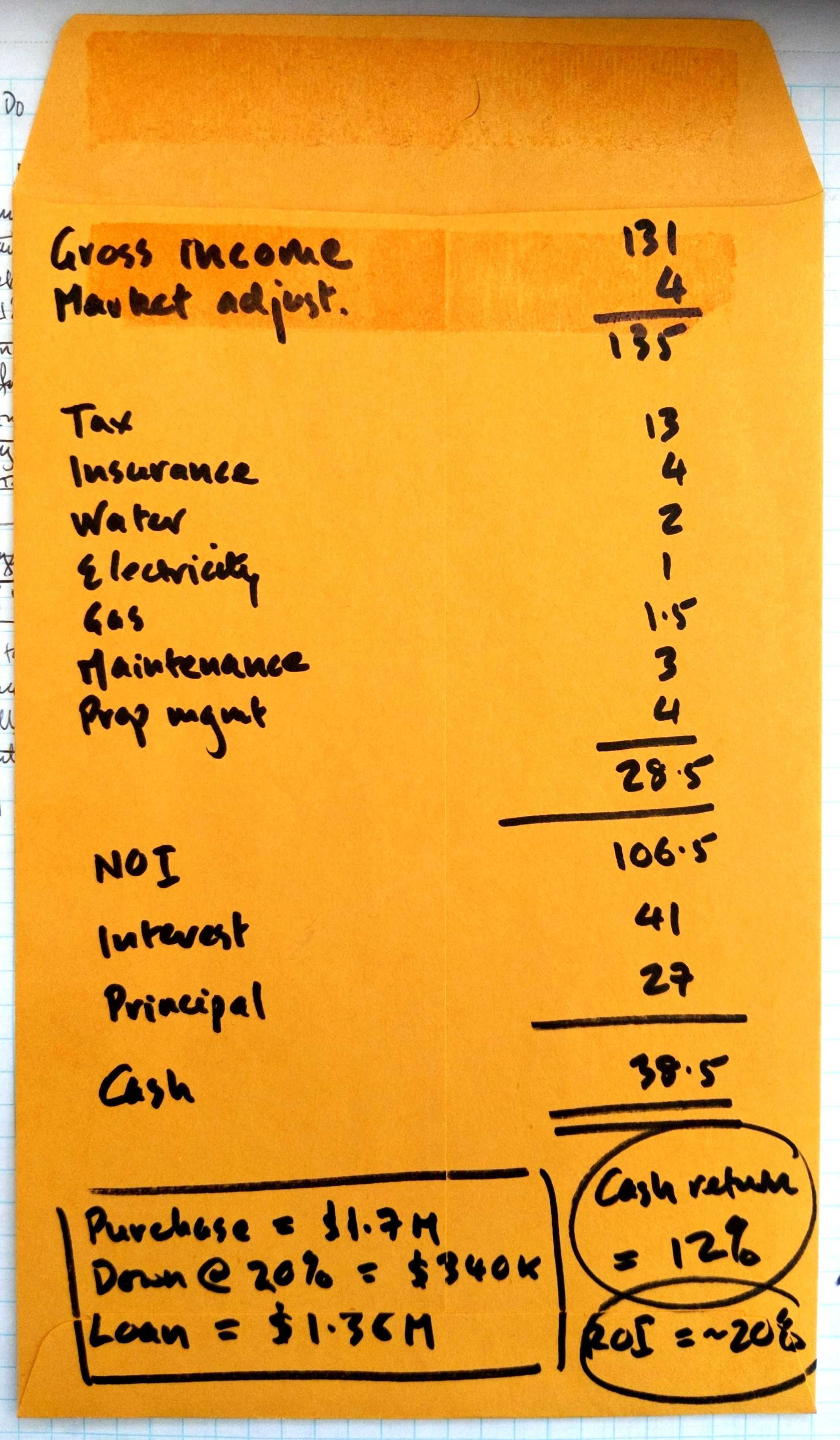One hundred seconds to decide

About one property my inbox every day as a potential investment. That is, one property a day is in the range of right geography, building type, size, condition and price point.
I screen quickly so I don't waste my time.
I have a two-step filter. The first coarse-grain filter takes fifteen seconds. The second medium-grain filter takes one hundred seconds. I've timed it. I'm serious.
The coarse-grain filter
I take the total annual current rent and divide it by the total asking price.
That's it.
I know the ratio for each of my three preferred geographies. Take this listing:

The fifteen second calculation is ($9,600 x 12) / $3,200,000 = 3.6%. Done. That's a pretty middle of the pack number for this particular area and multifamily. I also know the CAP rate is going to be horrible. How? These are gross rents on an almost immaculate property. There's not much upside I can see.
I pass. Fifteen seconds and I'm done.
The medium-grain filter
My medium grain filter is the back-of-the-envelope calculation. I build a year-two crude P&L and cash flow. Can it be done in one hundred seconds? Yes, absolutely. But it does require a little practice.
I said year-two because I'm trying to figure what stabilized cash flows might look like.
This listing recently hit my inbox:

Five residential units and a storefront in an area I've had my eye on. Here's the literal back-of-the-envelope calculation I did:

Cash-on-cash return of 12% ($38.5K / $340 down payment) is great. The return on equity (percentage profit before taxes, depreciation, principal payments) of 20% is also strong.
A few tips I use:
- I try not to get too precise, nor to be too aggressive or conservative. I round to the nearest $500.
- I know lending rates because I chat to several loan officers regularly. I already confirmed with one that they would lend to me 80% of the value (20% down).
- On a 30 year amortization, the principal is about two-thirds the amount of the interest in year two.
- I estimate insurance at $1 per sq. ft. per year if a number isn't given in the listing. The listing shows $4,000, using my heuristic $4,700.
- If I think a unit is under market rent, I use a rent-per-bedroom-per-month specific to the area I'm looking at. In this case about $800 per bedroom.
- I have a standard percentage for property management because I work with only one company. For me it is 3.5%.
- I estimate annual maintenance as 0.1% of the purchase price for a well-maintained building, and 0.3% for an okay-ish one. This property is middle-of-the-road at first glance.
That's it. From just a few numbers I can build a crude, stabilized view of the numbers that matter to me: return-on-equity, cash-on-cash return, CAP rate. (See below if you want more details on what these are).

Upshot: I'm very interested in this building. Time to go and see it. And here it is:
The fine-grain filter
My fine-grain filter is a five year projected P&L and cash flow. It still only takes a few minutes. This is where I check my numbers to the nearest $100 for each line item. I then figure out my offer price based on the returns and cash flow I need. I also factor in increases for rents, property taxes, utilities and so on.
For this property, the numbers came down slightly but not by much:

Overall, I like the look of this investment. It works for my criteria.
